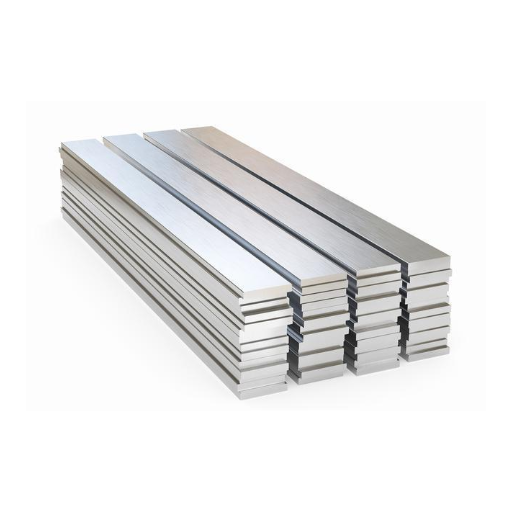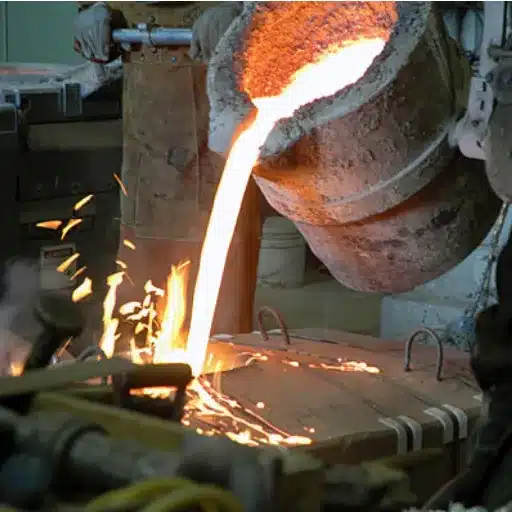When it comes to selecting the optimal stainless steel for your application, understanding the differences between material grades is crucial. Two of the most commonly used stainless steel alloys are 18-8 and 316, each revered for its durability, resistance to corrosion, and versatility. However, these grades possess distinct properties that make them uniquely suited to specific environments and uses. This article will provide a detailed and technical comparison of 18-8 and 316 stainless steel, exploring their chemical composition, mechanical performance, and practical applications. Whether you’re in the industrial, marine, or manufacturing sector, this guide will help you make an informed decision based on the demands of your project.
What is 18-8 Stainless Steel?
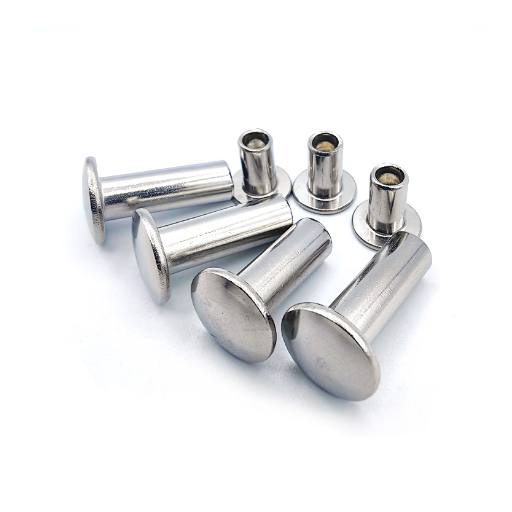
Understanding 18-8 Stainless Steel Composition
An austenitic grade, 18-8 stainless steel, contains chromium and nickel in the ratios of approximately 18% and 8%, respectively, which explains its common name. The combination of chromium and nickel provides for a strong ratio of corrosion resistance and durability, enabling it to endure damage even in harsh conditions like exposure to moisture and mild chemicals. The designation “18-8” refers to a family of stainless steels with a general chemical makeup that includes Type 304, the most popular variant.
The resistance to corrosion for 18-8 stainless steel greatly depends on the steel’s chromium content. It passivates the stainless steel by forming a protective oxide layer, which, under normal situations, mitigates rust and oxidation. On the other hand, the presence of nickel improves the material’s stability and ductility as it can maintain strength and shape during mechanical stresses and high temperatures. The combination of these two factors increases the dependability of 18-8 stainless steel.
Most distinguished, 18-8 stainless steel is non-magnetic in its annealed state and has good weldability and machinability. As a result, it is used extensively in food processing, construction, and automotive manufacturing. However, these metals may not perform as well during prolonged exposure to strong acids or chlorides, where more specialized grades like 316 stainless steel might be needed.
Applications of 18-8 in Fasteners
The fastener industry benefits from 18-8 stainless steel because of the type of strength, resistance to corrosion, and durability it offers. Most 18-8 fasteners are used where exposure to moisture or mild chemicals is common. This makes them appropriate to be used in different applications. Some good examples are the bolts, screws and nuts which are necessary in the construction industry. These fasteners are used both outdoors and indoors.
One of the most important ones is in the construction and infrastructure industries. 18-8 fasteners are highly in-demand here because they don’t rust and can withstand most weather conditions. This is a major benefit for the fasteners being used in construction of bridges and other building structures, as well as railing systems. Besides, fasteners are widely used in non-critical marine applications where the grade’s corrosion resistance can endure occasional saltwater exposure.
Used in the food and beverages industry, fasteners have reactive elements. These non-reactive properties, along with ease of cleaning, are why 18-8 fasteners are preferred here. Used in food processing machinery, 18-8 fasteners can also be found in kitchen appliances and storage units, all while meeting hygiene standards and providing structural safety. In addition, these fasteners are used in construction vehicles and aircraft where mechanical assemblies need added strength and protection against environmental stress.
Advantages of 18-8 in Corrosive Environments
Because of its strong resistance to rust and oxidation, 18-8 stainless steel ,which mainly consists of 18% chromium and 8% nickel, provides great benefit in corrosive environments. These benefits result from the chromium content as it passively protects the oxide layer from deteriorating forming a thin oxide layer at the surface. This makes 18-8 stainless steel an ideal candidate for any application that is subjected to chemicals, wet, and humid environments.
Their key advantage is its strength in industrial and marine environments. The nickel content improves its durability even more, especially against saltwater pitting and crevice corrosion. This makes it ideal for use in construction of parts from fasteners, valves, and piping systems to parts where maintaining structural and functional integrity is essential.
18-8 stainless steel provides great versatility when it comes to performance within different temperature ranges, making it extreme conditions. Furthermore, it is capable of providing great tensile strength, which means that it will not only endure environmental challenges, but mechanical ones as well. With these combined properties, 18-8 stainless steel becomes an optimal solution for corrosive environments with extensive maintenance or replacements.
How Does 316 Stainless Steel Differ?
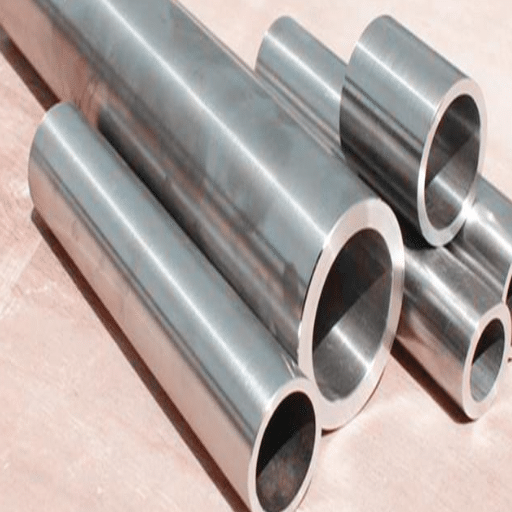
Unique Properties of 316 Stainless Steel
316 stainless steel is highly regarded for its exceptional corrosion resistance, particularly in marine and industrial areas where chlorides are abundant. This is thanks to the higher molybdenum content, which is about 2-3% and enhances resistance to pitting and crevice corrosion far more than 304 stainless steel grades. 316 also possesses remarkable tensile strength and resists many chemicals, high temperatures, and mechanical stress, thus expanding its range of useful applications.
In addition, 316 stainless steel is easy to weld or machine into elaborate structures or intricate pieces of machinery without risking a loss in integrity or strength. From cryogenic temperatures to about 1500°F, the alloy can retain its performance, showing its usefulness in many industries. Certain engineered devices and precision instruments may rely on these properties because the alloy is non-magnetic when annealed, which is important for certain applications.
Stainless steel 316 is often used in the medical and chemical processing fields due to its strong mechanical performance while providing reliable corrosion resistance at the same time. The unique properties of this steel type allow it to be trusted in more demanding environments while minimizing the need for maintenance and replacement.
The Role of Molybdenum in Corrosion Resistance
Molybdenum has an important impact on the corrosion resistance of stainless steel, especially in very acidic, chloride salt, or other aggressive environments. Molybdenum strengthens the stainless steel alloys’ pit and crevice corrosion resistance, which are common failure mechanisms in harsh environments. Molybdenum increases the protective long-term passive oxide corrosion protection black by refining the oxide layer on the steel surface. Below, we’ll explore five principal areas where molybdenum significantly helps to resist corrosion:
- Increased Resistance to Chloride-Induced Pitting: Molybdenum alloys in stainless steels, especially grade 316, demonstrate considerable resistance to pitting peril caused by chloride ions pervasive in salt water, brines, and de-icing fluids.
- Increased Resistance to Acidic Attack: Molybdenum alloys increase the stability of strongly corrosive sulfuric and hydrochloric acid by inhibiting surface oxidation and degradation of the stainless steel hardware.
- Crevice Corrosion Resistance: Molybdenum is beneficial in the inhibition of crevice corrosion under fasteners or seals where the oxygen content is diminished and thus the likelihood of localized corrosion increases.
- High temperature Corrosion: Due to the addition of molybdenum the thermal stability is increased extending the protection against oxidation and scaling at high temperatures frequently found in industrial processing.
- Basic Improvement in Passive Layer Development: As the steel’s passive layer is formed, molybdenum enrichment occurs, increasing its resistance to breakdown in aggressive chemical and marine environments.
Such properties highlight the importance of molybdenum alloys 316 and 316L stainless steel for shipbuilding, chemical processing, medical devices, infrastructure, and other applications that operate in harsh corrosive environments.
Common Uses in Marine Environments
Due to the continuous exposure to saltwater, temperature fluctuations, and high corrosion levels, the marine environment is known to impose some of the most difficult conditions on materials. From my experience, I know that 316 and 316L stainless steel grades perform exceptionally well in these environments because of their unparalleled resistance to pitting and crevice corrosion. These materials are used extensively in the construction of ship hulls and bulkheads, alongside underwater pipelines, where they have to maintain structural integrity while being constantly submerged in seawater.
Alongside these applications, I have observed these stainless steel grades being used extensively for marine fasteners, including bolts, screws, and nuts which serve as vital components when assembling and securing parts on boats and offshore platforms. The presence of molybdenum in these alloys guarantees the formation of a robust protective layer that can endure harsh marine conditions without sustaining rust or being eaten away. This dependability makes them a prime candidate in the marine industry, where hardware is required to withstand the elements while ensuring extended service intervals and maintenance-free operation.
As I see it, 316 and 316L stainless steels are also vital in parts of desalination plants as they come in handy where materials are subjected to long-term seawater and high-pressure working conditions. Major components, such as heat exchangers and pumps, are often made from these grades of steel owing to the remarkable ability to withstand eroding corrosion with perpetual immersion and salinity. The strength of these steels, together with their enduring durability, broadens the role of 316 and 316L stainless steel in marine applications, especially about deep fundamental issues of dependability and resilience.
18-8 vs 316: Which is Better for Corrosive Environments?
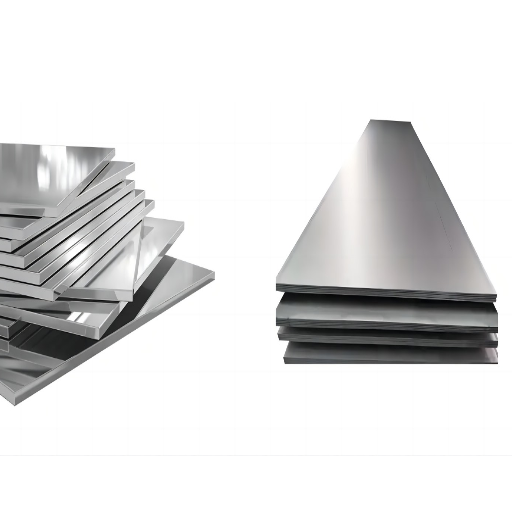
Comparing Corrosion Resistance of 18-8 vs 316
18-8 stainless steel provides satisfactory corrosion resistance, but struggles in seawater. 316 stainless steel, with its added molybdenum, is exceptional for resisting corrosion, particularly in chloride and seawater environments.
| Aspect | 18-8 | 316 |
|---|---|---|
|
Resistance |
Moderate |
Superior |
|
Saltwater |
Weak |
Excellent |
|
Composition |
Chromium, Nickel |
+Molybdenum |
|
Expense |
Lower |
Higher |
|
Strength |
Good |
Outstanding |
|
Usage |
General |
Marine, Medical |
Cost-Effectiveness of 18-8 Compared to 316
There are many factors to evaluate technically when assessing the cost-efficiency of 18-8 stainless steel and 316. Although 18-8 stainless steel has lower initial material costs because it is simpler composition of chromium and nickel, its performance in some environments may fall short. For example, when dealing with corrosive applications like chlorides or marine environment, moderate corrosion resistance along with its lower cost escalates over time due to potential replacements or maintenance during upkeep.
316 stainless steels, which are strengthened by the presence of molybdenum, perform far better in severe and chloride-laden environments, greatly reducing deterioration, repair, or replacement needs. Although 316’s cost is elevated at first, its long life and low upkeep offset expenses, and particularly assist other industries, like marine engineering, chemical processing, or medical equipment manufacturing, where having to constantly service and replace equipment is detrimental.
Thus, the operational setting and lifecycle expectations placed on the asset determine the focus of cost efficiency. 18-8 is a strong candidate for low corrosive environments. Yet, subsea applications often require 316 to endure harsh conditions, making the initial investment, and not cost, on 316 the better option in the end. The multi-layered cost and performance interdependence illustrates the need for careful material choosing based on requirements instead of assumptions.
Performance in Saltwater Applications
When comparing the performance of 18-8 stainless steel and 316 stainless steel in saltwater environments, the differences are in the saltwater exposure, corrosive environment, and composition. Due to the addition of molybdenum (usually around 2-3%), 316 stainless steel shows increased pitting and crevice corrosion resistance. This makes it the ideal candidate for marine-grade equipment, piping, and other prolonged salty exposure applications.
On the other hand, 18-8 stainless steel primarily lacks moledybdenum, resulting in a composition dominated by chromium and nickel. This makes it less durable in seawater and high-cloride environments. While some 18-8 grades such as 304 stainless steel perform acceptably in non-aggressive settings, they become overwhelmed with counterproductive accelerated corrosion in saltwater over time.
316 stainless steel adequately resists chloride concentrations of up to 1000 ppm (parts per million) without functional damage. 18-8 stainless steel performace meanwhile fails in conditions with more than 200ppm chloride concentration over prolonged durations. These attributes ensure the dependability of 316 stainless steel in harsh applications while justifying its critical use case costs.
Key Differences Between 304 and 316 Stainless Steel
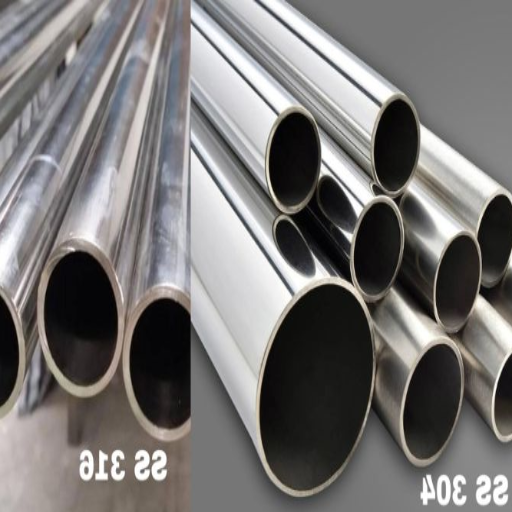
Understanding 304 vs 316 Composition
The 304 and 316 stainless steel is best differentiated by their chemical composition as it affects their properties and applications. Both grades contain iron as the primary element along with high chromium content (generally between 18-20% in 304 and 16-18% in 316) which bestows corrosion resistance on the stainless steel.
304 stainless steel also contains around 8-10.5% of nickel, which improves its ductility and formability. 316 stainless steel also contains additional elements, most notably 2-3% molybdenum. The inclusion of molybdenum is essential because it greatly improves resistance to pitting and crevice corrosion, particularly in chloride-containing or harsh chemical environments. These enhancements make 316 especially well-suited for marine conditions, chemical processing plants, and other aggressive situations.
The slight variance in carbon content also influences these grades’ properties. For instance, low-carbon versions such as 304L and 316L are specially designed to reduce carbide precipitation during welding, which is detrimental to corrosion resistance in heat-affected zones.
The 304 stainless steel is very cost effective and versatile for general-purpose applications because of the precisely balanced alloying elements. On the other hand, 316 remains superior in highly corrosive or chloride-rich environments which justifies its higher price. These compositional differences aid in choosing the material best suited to operational needs.
Choosing Between 304 and 316 for Fabrication Needs
Checking the surrounding environmental and mechanical requirements of the application is critical while deciding between stainless steel 304 or 316 for fabrication. The two alloys have almost the same mechanical characteristics like tensile strength and ductility, which makes them suitable for multiple engineering applications. However, their performance diverges significantly depending on exposure to certain conditions.
Known for being economical, versatile, and durable, 304 stainless steel, which is composed of 18% chromium and 8% nickel, is often used for indoor and mildly corrosive applications food processing equipment. 316 stainless steel is equipped with additional molybdenum (2-3%), which makes it more resistant to pitting and crevice corrosion, especially in marine or industrial chloride-heavy hotspots. This grade will perform better in places like chemical storage tanks because it is more resistant to corrosion.
The primary focus of using 316 steel will certainly be its increased cost of acquisition, however, its reduced maintenance requirements and lifespan in corrosive environments will offset the additional cost. The operational cost also needs to be factored into the budget long term.
Impact of Nickel and Chromium in Stainless Steels
The mechanical and chemical characteristics of stainless steels are greatly affected by alloying elements nickel and chromium. To pass as stainless steel, an alloy must contain chromium in amounts not less than 10.5%, as it serves to constitute a passive chromium oxide layer on the surface. This layer is astonishingly self-repairing, protecting the underlying metal from oxidation and corrosion if exposed to environments with oxygen and moisture. The protective properties imparted by chromium are best illustrated in Type 304 stainless steel, containing about 18% chromium. Type 304 stainless steel is remarkably durable in non-extreme corrosive environments.
Nickel improves the overall stability and ductility of austenitic stainless steels. In wrought 316 and 304 steels– non-magnetic and strong over a wide range of temperatures— nickel aids to ensure the austenitic structure is retained dominantly above the physically stabilizing temperature to strengthen the steel. Austenitic grades typically contain 8 to 10% nickel; this amount greatly enhances resistance to aggressively acidic and chloride environments, mitigating stress corrosion cracking. For example, the elevated levels of nickel, along with molybdenum in Type 316 stainless steel, enhance its performance in marine service or chemical processing plants.
As chromium and nickel’s synergistic effects have been further enhanced with new alloying techniques, optimized stainless steel manufacturing technologies, as well as sheer economic factors, proficient austenitic stainless steels became indispensable in architecture and petrochemical industries due to their exceptional resistance to corrosion, thermal stability, and tensile strength. With the skillful manipulation of these elements, engineers could devise materials with extended service life, greater durability, lower maintenance needs, dependable performance in extreme conditions, and high reliance on maintenance.
Applications and Strength of 300 Series Stainless Steels
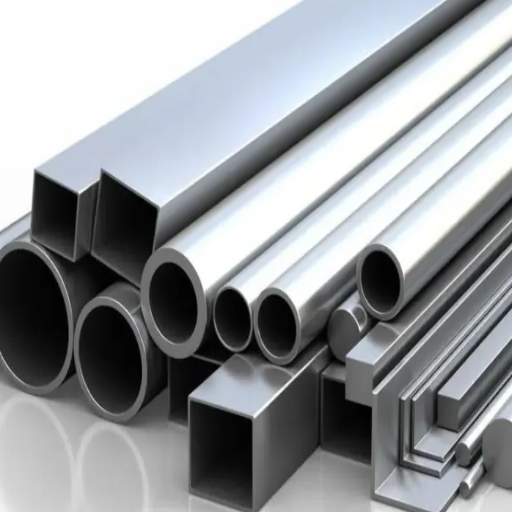
Why Choose 300 Series for Weld Applications?
Stainless steels of the 300 series investments such as 304 and 316, are particularly well known for their weld applications owing to their performance attributes. These austenitic alloys have high weldability due to low carbon levels and no martensitic cooling transformation. This stability reduces the possibility of thermal cracking, and uniform joint operability in the presence of cyclic mechanical loads is safeguarded.
An equally important benefit is post-welded corrosion resistance. Grade 316 is additionally molybdenum alloyed; therefore, it resists pitting and crevice corrosion, making it suitable for marine or chemical processing operations. Moreover, grades with the “L” suffix, for example, 304L and 316L, are purpose-made for welds, having low carbon content to avert sensitization and intergranular corrosion in weld portions.
Support for numerous welding techniques is an advantage of the 300 series steels, for instance, gas tungsten arc welding (GTAW), gas metal arc welding (GMAW), and shielded metal arc welding (SMAW), allowing their use in differing industries. In addition, their substantial mechanical strength at elevated temperatures makes them ideal for pressure vessels and heat exchangers. All in all, the reliability, versatility, and advanced performance of the 300 series alloys monotonically add gravitas to their utility for sophisticated welds.
Comparing Tensile Strength of 18-8 vs 316
18-8 stainless steel is part of a family of wrought austenitic stainless steel alloys that contain about 18% chromium and 8% nickel, like 304 stainless steel. This classification exhibits widespread use owing to its outstanding resistance to oxidation, good weldability, and fair tensile strength. Grade 18-8 stainless steel has a tensile strength of around 515 MPa (75,000 psi), which is adequate for most intended purposes.
On the other hand, 316 stainless steel, which adds molybdenum in quantities of about 2-3% in some grade 316s, greatly increases resistance to pitting and crevice corrosion initiated by chlorides. In addition, 316 stainless steel has slightly greater tensile strength than 18-8 alloys because of its more refined composition, reaching approximately 579 MPa (84,000 psi). This increase in strength makes 316 stainless steel more useful in extreme environments, particularly harsh marine or chemically aggressive surroundings.
Although both have exceptional deformability, 316 stainless steel’s superior tensile strength separates it as critical for more demanding applications. The decision between these alloys is made based on the operating atmosphere and the need for corrosion resistance. Hence, grasping these mechanical properties and their consequences is vital for choosing the proper industrial material.
Adapting to Harsh Environments with Series Stainless
Stainless steels, especially from the 300 and 400 series families, are engineered to withstand the toughest environments. These alloys possess optimized properties such as enhanced resistance to corrosion, increased thermal stability, and superior mechanical integrity. These properties support the alloys being indispensable in diverse industries ranging from chemical processing to marine environments. For example, 316 stainless steel has the strongest chloride and aggressive chemical resistance, making it optimal for saltwater or acidic environments, whereas 304 stainless steel offers general-purpose corrosion resistance across a wide range of moderate environments.
The performance of catamaran hulls under severe conditions is largely attributed to the addition of chromium, nickel, and molybdenum into the alloy. Chromium oxygenates and generates a firm protective oxide layer on the material’s surface, thus providing a self-healing mechanism against rust and pitting. Nickel improves corrosion resistance and provides added toughness in cryogenic applications. Molybdenum has been known to further strengthen resistance to localized forms of corrosion, such as crevice corrosion or stress corrosion cracking that can occur in high salinity, high pressure, or high temperature environments.
Moreover, current progress in the field of metallurgical engineering has resulted in the creation of duplex grades in the stainless series, which merges the benefits of both austenitic and ferritic structures. These duplex alloys possess greater tensile strength and superior resistance to stress corrosion cracking, which makes them suitable for offshore platforms, desalination facilities, and ultra-high-pressure piping. The constant modification of the formulations of stainless steel alloys makes certain that they are not only responsive to new challenges but also reemptively adjustable for increasingly corrosive and thermally extreme operational environments.
The compositional refinements in these alloys, along with the resulting physical changes, are especially critical for policymakers and design engineers when selecting the correct alloy steel series for given conditions. This form of research engineering ensures optimized performance in operations while also achieving longevity in structural systems that necessitate enduring reliability.
References
1. South Dakota State University – Microbially Induced Corrosion Study: This thesis evaluates the effectiveness of 304 (18-8) and 316 stainless steel with regard to their corrosion resistance and microbial ecosystems.
2. CORROSION Journal – Behavior in Caustic Soda Solutions: In this research article, the author focused on 18-8 and 316 stainless steels and how their corrosion had changed with time in hot concentrated caustic soda solutions under various heater arrangements.
3. Wiley Online Library – Stainless Steel Grades: While I could not access the page, I clearly remember the discussions from class because Wiley’s modules concerning stainless steel grades are well-prepared. Other helpful material is also accessible in that library.
Frequently Asked Questions (FAQ)
Q: What are the main differences between 18-8 and 316 stainless steel?
A: The main differences between 18-8 and 316 stainless steel lie in their composition and corrosion resistance. 18-8 stainless steel, a term often used interchangeably with 304 stainless steel, contains 18% chromium and 8% nickel. 316 stainless steel, on the other hand, includes molybdenum, which provides increased corrosion resistance, making it more suitable for environments with high chloride levels.
Q: How does 18-8 stainless steel compare to 304 stainless steel?
A: 18-8 stainless steel is effectively the same as 304 stainless steel, as both contain 18% chromium and 8% nickel. This type of stainless steel is widely used due to its excellent corrosion resistance and versatility in various applications.
Q: Why is 316 stainless steel preferred in marine environments?
A: 316 stainless steel offers superior corrosion resistance, particularly in environments with high chloride content, such as marine settings. The addition of molybdenum in 316 stainless steel enhances its ability to resist pitting and corrosion, making it a preferred choice for such conditions.
Q: Is 18-8 stainless steel suitable for high-chloride environments?
A: While 18-8 stainless steel provides good corrosion resistance, it might not perform as well as 316 stainless steel in high-chloride environments. For applications requiring high corrosion resistance, 316 stainless steel is often recommended.
Q: How do the prices of 18-8 vs 316 stainless steel compare?
A: Generally, 316 stainless steel is more expensive than 18-8 stainless steel due to its superior corrosion resistance and the addition of molybdenum. The choice between these grades often depends on the specific requirements of the application and the environmental conditions.
Q: Are there any applications where 18-8 stainless steel performs better than 316 stainless steel?
A: 18-8 stainless steel is widely used in applications where excellent corrosion resistance is required but the environment is not excessively harsh. It is often chosen for its cost-effectiveness and versatility in less aggressive environments compared to 316 stainless steel.
Q: Can 18-8 stainless steel be used interchangeably with carbon steel?
A: 18-8 stainless steel and carbon steel are different grades of materials with distinct properties. While 18-8 stainless steel offers better corrosion resistance, carbon steel may be chosen for its strength and cost-effectiveness in applications where corrosion is not a significant concern.
Q: What makes 316 stainless steel more corrosion resistant than other stainless steel types?
A: 316 stainless steel’s superior corrosion resistance is due to its composition, which includes molybdenum. This element enhances its resistance to pitting and crevice corrosion, particularly in environments with high chloride concentrations.
Q: How do different grades of stainless steel impact their performance?
A: Different grades of stainless steel are formulated to provide specific properties such as corrosion resistance, strength, and formability. The choice of grade depends on the application’s environmental conditions and performance requirements, with grades like 316 stainless steel offering excellent resistance in harsh conditions.

